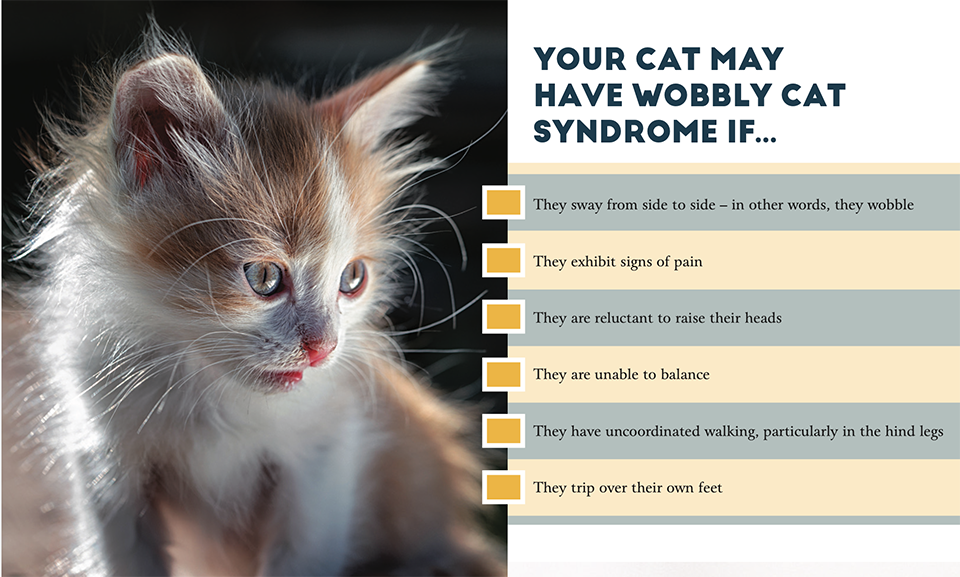ALL ABOUT WOBBLY CAT SYNDROME
By EMMANUEL D. MACAPAGAL, DVM
Cervical spondylomyelopathy, commonly referred to as wobbler syndrome or wobbly cat syndrome, is a disease of the spine within the neck, resulting in poor transmission of nerve signals between the brain and the body.
For six to eight weeks, a Kitten may seem normal, but then an unsteady, wobbling gait starts to manifest, their legs trembling and head bobbing. The Kitten struggles to stand up straight and the legs are placed in an angle, as if trying to maintain balance.
The Kitten staggers, stumbles and would often lean on walls. When seated, they don’t look any different from a normal Kitten, until they try to play with others. You will immediately notice the difference.
There is slight improvement in some as they accommodate for their deficits. There are a lot of Cats who grow into mature adults, but their movement is a particularly pitiful and heartbreaking sight to see. It may not be a fatal disease, but the effects of this disorder are permanent.


HOW IT’S DIAGNOSED
Aside from the usual signs, the vet will need to know a Cat’s medical history, which includes the extent and duration of the symptoms. The vet will also check the medications a Cat is taking, plus the mother’s.
The vet will perform a thorough physical and neurological examination and take a standard neck X-ray. Basic hematology and chemistry panel tests also need to be done.
In many cases, a thorough physical exam, history taking, and neurological examination are enough to arrive at a diagnosis. There are other ancillary procedures like blood and urine tests, abdomen and thorax radiography, eye examination tests, and MRI to diagnose organic brain disease and abnormal structures.
A follow-up appointment is needed for monitoring.
MYELOGRAPHY
Myelography may be done to see the extent of the spinal cord compression. A Cat must be anesthetized in order to do this.
During this procedure, the vet will inject a contrast dye into the neck to highlight the spinal cord on the X-ray. This procedure requires a high level of skill, because of the possible neurologic consequences, which may be permanent.
In many cases, CT scans and MRIs are helpful in visualizing spinal cord compression.
In the Philippines, advanced diagnostics is rarely performed due to the lack of experts and expensive equipment.
REMEDIES
I approach this disease conservatively in that I prefer to give anti-inflammatory medications and cage rest when necessary. In fact, I must say that conservative treatment for wobblers syndrome often lasts several months, and sometimes, for the remainder of a Cat’s life.
I do not advise treatments that are very expensive. I would avoid exacerbating the condition even further through palliative management – that is, the management of symptoms.
Dr. Emmanuel D. Macapagal is the 2000-2001 president of the Philippine Animal Hospital Association, Inc.






